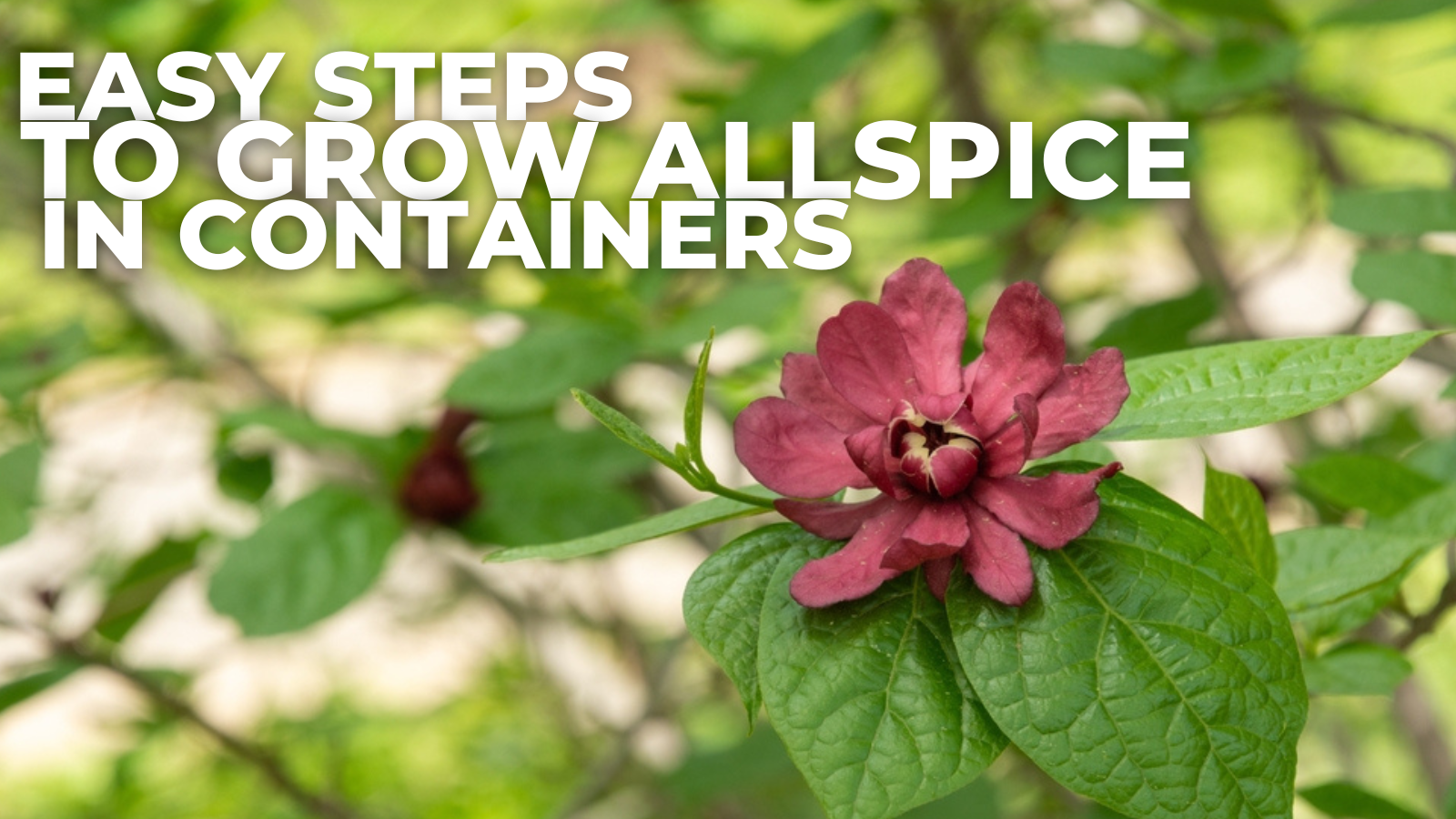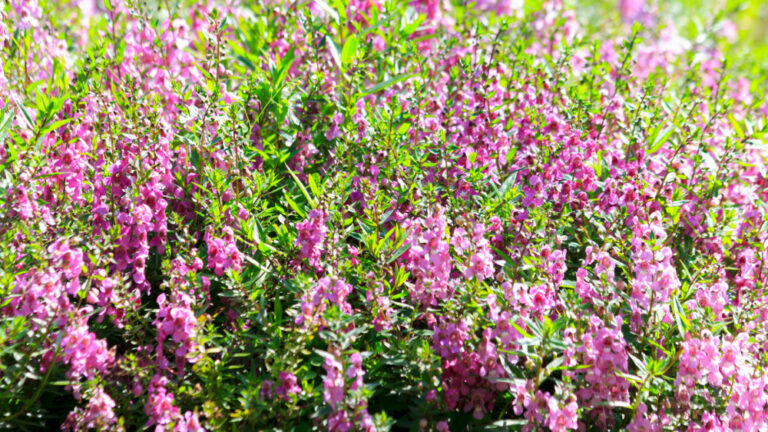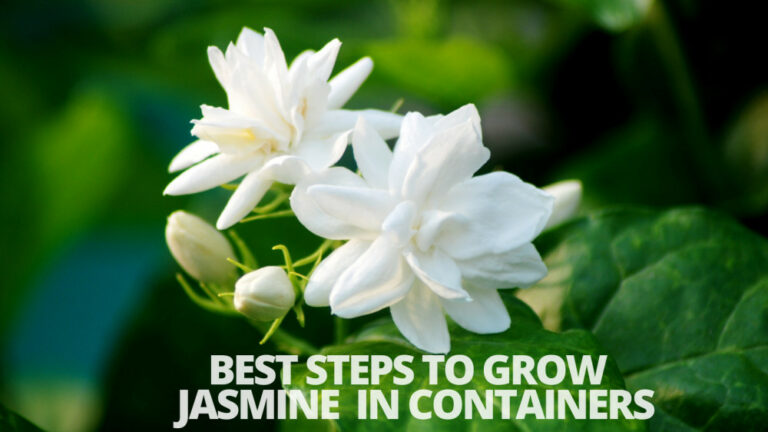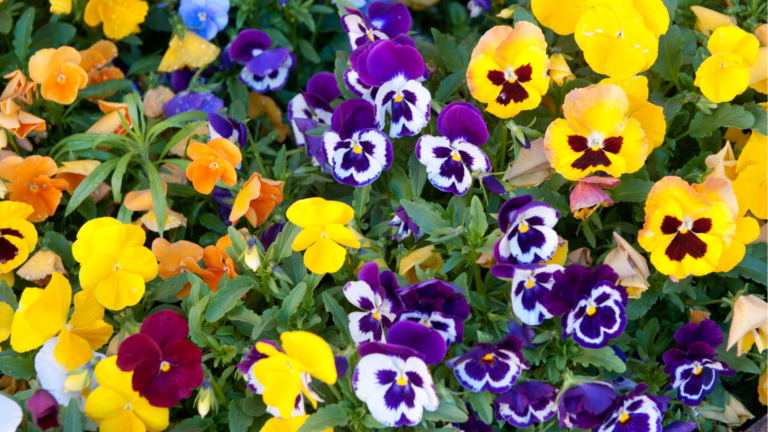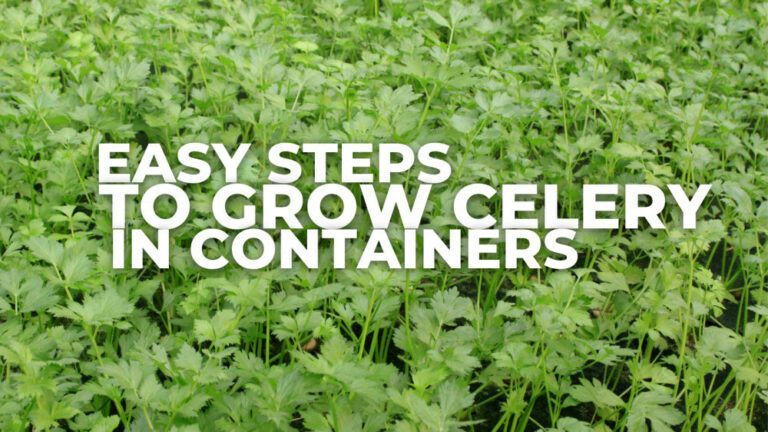Easy Steps To Grow Allspice In Containers
Easy Steps To Grow Allspice In Containers
The allspice tree produces the dried berries used to create everyone's favorite fall flavour, allspice, and is a beautiful tree in and of itself.
Given the right conditions, you can grow the tree at home, the only spice crop grown exclusively in the Americas.
History Of Allspice
On his second voyage to the New World in 1493, Christopher Columbus discovered allspice for the first time in Jamaica.
He brought allspice back to Spain after mistaking it for pepper, which was what he was looking for. Diego Alvarez Chanca gave it the Spanish name “pimienta” (pepper) for this location.
So, by the 15th and 16th centuries, it gradually migrated into European and Mediterranean cuisines, which remained a staple until World War II.
Many allspice trees were felled then, and their production never recovered. Therefore, it isn't as frequently used now.
This doesn't change the fact that allspice is a nutrient powerhouse that you need in your life immediately. Let's examine a few of them.
What Is Allspice?
The dried brown berry known as allspice comes from the West Indies and Central American-native Pimenta dioica tree, a relative of the clove.
When allspice berries were first brought to Europe in the 17th century, they were named “allspice” because of the flavour comparisons to clove, cinnamon, and nutmeg.
The unripe, green allspice berries are picked, briefly fermented, then sun or machine-dried until reddish-brown.
What’s The Flavour Of Allspice?
Given that allspice's flavour profile is complex and includes notes of cloves, nutmeg, star anise, fennel, black pepper, and cinnamon, it makes sense that it is frequently mistaken for a blend like Chinese five-spice or pumpkin spice.
According to Schiff, it is warming and has a savoury and peppery backbone. “Like the hip, cultured cousin of pumpkin spice who reads The Paris Review, enjoys natural wine, and says they've never been to Starbucks.” The one, you know.

Health Benefits Of Allspice
There are a lot of potential health advantages to allspice. Here are a few of the most well-liked ones, all with scientific support.
1. Promotes Digestion
The natural compounds in allspice may be ideal for calming the stomach and promoting healthy digestion due to their calming, rubefacient effects.
Allspice contains eugenol, which may treat digestive problems like diarrhea, nausea, vomiting, and constipation.
It may also promote regularity, which lessens bloating and excessive flatulence. Allspice's anti-inflammatory properties may help reduce inflammation even more, which would help digestion.
2. Contains Anti-Inflammatory
Perhaps the most well-known benefit of allspice is its capacity to reduce swelling and ease localized pain.
The spice's active ingredients may contain chemical compounds that reduce inflammation, making it a good choice for treating conditions like arthritis, gout, muscle aches, and even hemorrhoids.
Additionally, it might contain some analgesic elements that enable pain management during recovery from surgery or injury.
3. Boosts Immunity
According to research, allspice may have some antibacterial and antifungal properties, especially with stomach bacteria (E. coli and Listeria monocytogenes).
Additionally, to facilitate the smooth operation of the gastrointestinal system, it may also defend it from external attack via a natural immune response.
Additionally, when allspice is added to specific foods, it may neutralize the bacteria there, preventing it from ever entering your body and starting to cause harm.
4. Antioxidant Capacity
Allspice can be a very effective antioxidant due to eugenol, quercetin, tannins, and other chemical compounds.
Many of these compounds are ideal for neutralizing and removing free radicals from the body.
Free radicals are the unfavourable byproducts of cellular metabolism that can lead to the mutation of healthy cells, which frequently results in serious illnesses, including cancer.
Allspice contains high levels of vitamins C and A, which may also be responsible for its antioxidant properties.
5. Improves Circulation
Allspice contains high levels of copper and iron, which are crucial components of red blood cells and may be beneficial for enhancing circulation.
Additionally, the rubefacient property of the spice has stimulant and warming properties.
This can lead to more energy and ensure the body's extremities are properly oxygenated with increased blood flow.
Additionally, iron plays a role in producing some essential enzymes for proper metabolism.
6. Improves Heart Health
Allspice contains potassium, a vasodilator that relieves much of the stress on the cardiovascular system and may benefit heart health.
This can increase blood flow through relaxed blood vessels and lessen pressure on the heart and arteries, which lowers the risk of atherosclerosis and, by extension, strokes and heart attacks.
7. Prevents Infection
Many of the compounds found in allspice may be useful in preventing bacterial infections.
Eugenol has also demonstrated antiseptic and antifungal properties in some studies. In one study, it was used topically to eliminate yeast and E. coli bacteria.
8. Eases The Symptoms Of Menopause
Allspice's ingredients may cause menopausal women to produce more estradiol. Hot flashes and other menopause side effects are lessened as a result.
People from cultures where allspice is frequently used in cooking report fewer negative menopause symptoms.
For many women, increasing their intake of allspice appears to be a low-risk treatment for menopause symptoms.
9. Prevents Cancer
The majority of the healthy plant compounds found in allspice may be able to fight cancer.
For instance, research in test tubes and on animals suggests that eugenol, quercetin, gallic acid, and ericifolin may stop the growth and spread of tumours and encourage apoptosis, the controlled death of cancer cells.
Studies on the anticancer effects of allspice have focused on colon, breast, prostate, gastric, duodenal, and gastric cancers.
For instance, studies on breast cancer cell lines indicate that allspice extract promotes autophagy. Your body uses autophagy to eliminate unwanted or damaged cells, including cancerous cells, by degrading them.
While gastric cancer cell lines were affected by allspice extracts' ability to inhibit the growth of Helicobacter pylori, a bacterium thought to be carcinogenic, prostate cancer cells tended to be eliminated through apoptosis.
10. Pains And Aches
Allspice treats tooth pain, muscle cramps, and headaches. According to research, this might be because it contains eugenol, used frequently in dentistry as an analgesic or pain reliever.
Allspice essential oil may also reduce muscle pain and sprains by enhancing circulation.
However, although research is encouraging, there aren't enough human studies. More study is required.
11. Maintains Weight
According to research, allspice extract may activate Takeda G protein-coupled receptor 5, which secretes the hormones peptide YY and glucagon-like peptide 1, which decrease hunger. These hormones increase feelings of fullness, which decreases appetite.
12. Blood Sugar Maintenance
The pancreatic islets, which produce insulin, may be protected and function better thanks to the eugenol in allspice, which could help control blood sugar levels and the early stages of type 2 diabetes.
Steps To Grow Allspice In Containers
Container Requirements
Get a growing container ready for each allspice tree you want to grow. Four-inch starter pots should be filled with a moistened mixture of coarse sand, perlite, and compost. To eliminate any air pockets, firmly pack the mixture into the pot.
Soil To Grow Allspice In Containers
Allspice favours nearly any type of well-draining average media. The plants can grow on various types of land in their native habitat.
Before you plant your tree, amend the soil where you live if it is compacted by adding agricultural sand and traditional garden media. Apply the same criteria to garden containers. Allspice grows best in a pH range of 6.1 to 7.8.
Sun and Temperature
The minimum daily requirement for allspice is six hours of full morning light in full sunlight or partial shade.
Young trees require full daytime sun, while more established trees can thrive in areas with more shade. Make sure to shade the tree in the afternoon because harsh afternoon light can burn the foliage.
Zones 10 and 11, where temperature ranges rarely fall below 40° Fahrenheit, are suitable for growing allspice.
A snap freeze of 26°F won't kill established trees. When temperatures consistently fall below 40°F in locations outside their hardiness range, grow the trees in containers and bring them inside or place them in a climate-controlled greenhouse. The tree becomes harmed by prolonged exposure to cold and eventually dies.
Water And Humidity
Native to regions with naturally moist earth, allspice grows there. Maintain a moist but not soggy growing medium. Use soaker hoses or drip irrigation to water young trees every day.
A tree in a container probably needs more water than a tree growing in the ground. Before adding more water, ensure the top two inches of the growing medium are moist.
A low, slow stream from a hose or watering can do so without drip irrigation or soaker hoses. There is no need to water every tree in your garden when it rains.
Fertilizing To Grow Allspice In Containers
When you plant each tree, fill the hole with powdered slow-release tropical plant fertilizer and water it in.
Every three to five weeks, spread additional fertilizer around the base of the plant. Plant food will do if you don't have access to low-plant food.
The suggested NPK for the allspice plants in the first year is 20-180-50. A 15-year transition to 300-250-750 will follow.
Remember that the NPK ratios used for growing allspice are based on horticultural standards. Tropical plant food is equally effective.
Propagate Allspice
The best way to grow allspice trees is from seed, which will sprout into a transplantable seedling after about six months.
The germination of seeds does not require any laborious pretreatments. Still, they must be planted immediately after harvesting because exposure to the elements will quickly cause them to lose fertility. Check the How to Plant Allspice section above for more details on seed propagation.
Pruning Allspice
After three years of growth, prune allspice trees in the spring and summer to maintain their shape or to keep them small if you're growing them indoors.
To make the tree look bushier, prune it upward from the base. Any low-lying branches should be cut off to make the canopy appear more conical.
To give allspice the space it needs to grow, remove any branches that are broken or entwined.
Winter doesn't cause the allspice to lose its leaves, and the fruit naturally falls from the tree. Berry sprouting should be avoided by gathering them as soon as you can.
Pests And Diseases Of Allspice
- Although mealybugs, whiteflies, and aphids rarely feed on the sap of leaves and plant material, allspice does have a few noticeable pests.
- Mealybugs resemble little cotton balls. Whiteflies are tiny, gnat-sized moths, and aphids have pear-shaped bodies.
- Use a strong stream of water from a hose to spray aphids and whiteflies. Ladybugs and lacewings can also eat them.
- Neem oil spray can eliminate all three pests. Please avoid using the spray during the flowering stage because it discourages helpful pollinators.
- A fungus called rust manifests itself on the undersides of allspice leaves. White lesions are the disease's first symptom.
- They give off a green tint before turning the leaves black and defoliating them. Mulch should be placed all around the base of your pimenta to prevent rust and ensure proper drainage.
- Since there is no cure for rust-infected foliage, it should be removed. To stop the fungus from spreading, spray a copper-based fungicide on the remaining tree.
- A fungal disease called powdery mildew gathers on plant leaves when it's cool and rainy. As soon as impacted leaves appear, remove them.
- If the leaves start to fall, the disease has likely advanced considerably. Use neem oil or copper fungicide sprays to prevent powdery mildew.
- Large masses develop on the roots and at the base of pimentas due to bacterial crown gall. The initial indication is a gall at the trunk.
- The disease's progression can result in wilting and eventual death. Crown gall has no proven cure, making prevention the key to success.
- Crown gall is a bacterial disease, but many species of established trees can tolerate it long if you destroy any infected material. Recycle those materials instead.
Harvesting Allspice
The allspice seasoning you're familiar with is made from the seeds found inside the small purple or black berries that develop from the allspice tree's flowers.
One or two seeds may be present in each berry. Gather the berries and leave them to finish maturing in the sun without worrying about their ripeness.
Once they have dried in the sun, you can hear the seeds inside rattling. Pick the berries from the sun once they have turned a dark reddish-brown colour from drying.
The seeds will still smell good and be prepared for grinding or storing. When the seeds are ready, gather the berries because if you wait too long, the allspice flavour and aroma will be lost.
Plant the seeds as soon as they are ripe if you want to grow new trees from them because they only last for two months.
To use in cooking, you can also harvest the allspice leaves. Since they are best when used fresh, wait to pick them up until just before you intend to use them.
Store Allspice
Only gather the allspice leaves a day or two before using them because they quickly lose flavour.
They lose flavour when dried, but they can be stored in the refrigerator for a day or two in a plastic zipper bag or another food container.
Seeds can be kept whole and ground as needed, or they can be kept ground for convenience. In either case, you can store them in your spice cabinet in a glass jar, a small container previously used for another spice, or a plastic food storage container.
Allspice is a rare tree with so many culinary applications that it is difficult to understand why it is so uncommon.
By planting your allspice tree this year, you can experience how fresher and more delicious allspice is when compared to allspice that is purchased from a store.
How Is Allspice Used?
Whether in the form of berries or ground, allspice is used in various dishes in many parts of the world, including Europe, the Middle East, Africa, the Caribbean, and Central America.
It can be found in spice blends like the Middle Eastern Baharat, the Ethiopian Berbere, and the American Pumpkin Spice, the American version of the British Mixed Spice.
Along with alcohol infusions like mulled wine and other spiced liqueurs, whole allspice berries are also used in pickling recipes.
Allspice ground has so many applications. I incorporate it into Middle Eastern rice dishes like Maqluba, a LinsFood specialty, and salads like Tabbouleh, soups, and stews.
Don't forget about desserts; this spice gives cakes, cookies like gingerbread, and fruit pies like apple pie an incredible warmth when ground.
In marinades, ground allspice is also fantastic; the well-known Caribbean jerk chicken comes to mind. In addition, Jamaican jerk seasoning tastes excellent with tofu and other meats like pork and fish.
The next time you make hot chocolate, add a dash of this spice for more flavour and a hint of heat. Remember to use whipped cream!
Conclusion
Allspice can be used in many sweet and savoury dishes, including cookies, pumpkin pie, spice cake, sausage seasoning, and ham glazes. You may visit my vegan recipes using Allspice.
I trust you enjoyed this article on the Easy Steps To Grow Allspice In Containers. Please stay tuned for more blog posts to come shortly. Take care!
JeannetteZ
>>>Please click here to read my all-inclusive article about Container Gardening<<<
>>>Are you interested in homegrown herbs and medicine? Please click here to find out more about it!<<<
Your Opinion Is Important To Me
Thoughts? Ideas? Questions? I would love to hear from you. Please leave me your questions, experience, and remarks about this article on the Easy Steps To Grow Allspice In Containers in the comments section below. You can also reach me by email at Jeannette@Close-To-Nature.org.
Disclosure
This post may contain affiliate links. As an Amazon Associate and other affiliate programs, I earn from qualifying purchases at no extra cost to you. Read my full affiliate disclosure.
You might also enjoy these blog posts:
What Is The Best Bach Flower Remedy
List Of Flowers For Healing And Strength
21 Most Popular Dried Flowers To Store
Easy Steps To Grow Dill In Containers
Easy Steps To Grow Fennel In Containers

